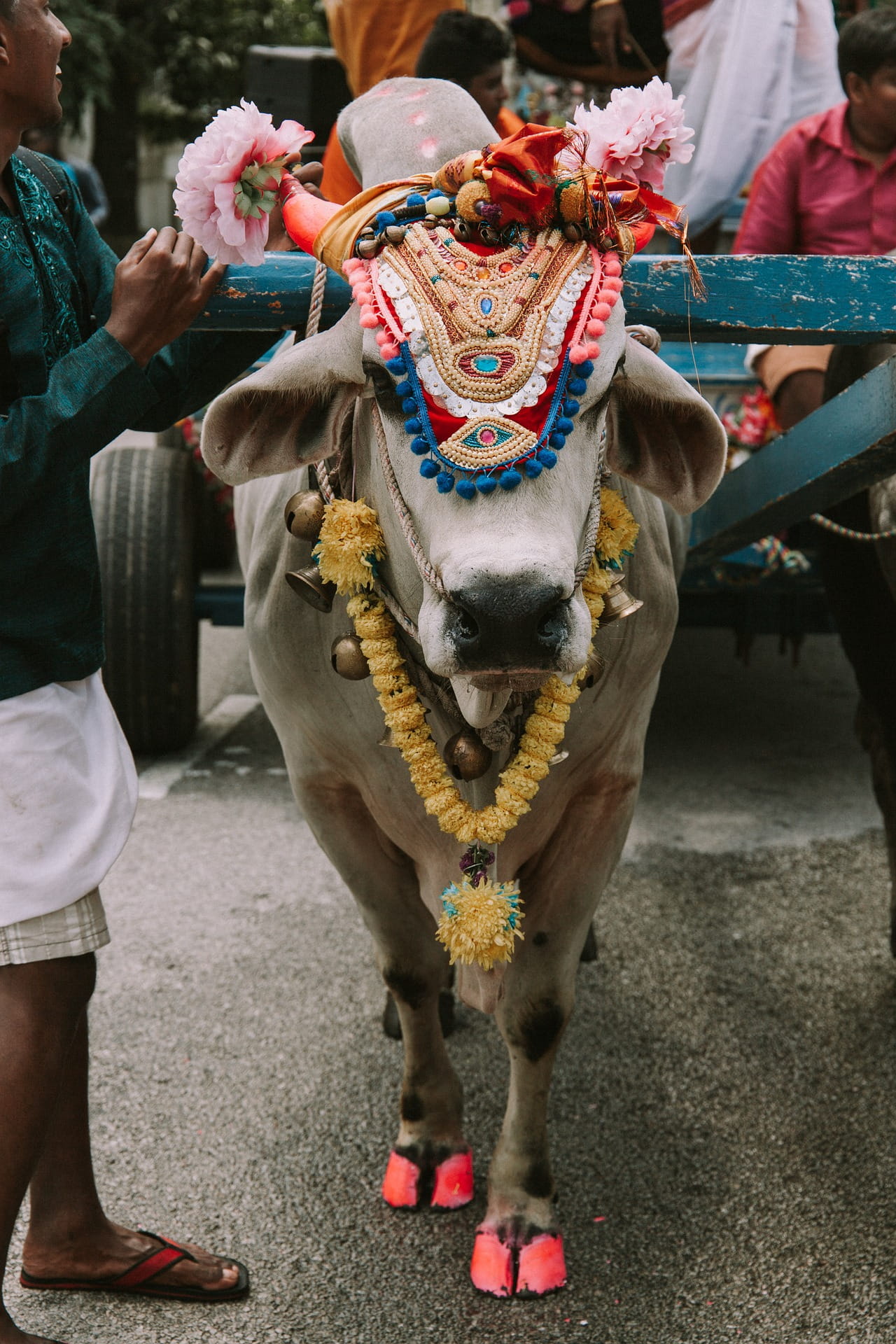It was also a wake-up call to Hindus that their faith is among the least understood. This lack of awareness became glaringly apparent after Sept. 11, when Hindus around the United States discovered they were often the unwitting victims of backlash crimes.
"Sept. 11 has been a catalyst for everybody to know about everybody else in this country," said course conductor Paul Mehta, dean of the College of Education at Prairie View A&M University. "The Arabs and Muslims in Houston have been conducting sensitivity seminars, and we need to, too."
He pointed to the scant coverage that Hindu and Indian culture
receive in textbooks as indicative of a larger social problem. "All they
have, probably, is two pages on India in their whole world history
book," he said.
Prior to attending the seminar, Lt. Milton Jones of the Houston
Police Department was fairly frank about his understanding of the faith.
"Sad to say, it was pretty much a blank slate," said Jones, who acts as
Hate Crimes Coordinator for HPD. "I knew next to nothing about the Hindu
culture."
For Jones and other police officers, the seminar was timely and an
important step toward understanding the lives of Houston's 60,000 to
80,000 Hindus.
"We're also there to say, 'We're your police department, and we're
there to help you,'" he added.
While Arab-Americans and Sikhs have been the most prominent victims
of hate crimes following the World Trade Center attacks, a number of
violent crimes against Hindus have also been reported, as well as
property damage at several Hindu temples.
"I'm not sure how helpful it'll be to preventing such incidents,"
conceded Jones. "The people that perpetuate those crimes, you're not
going to find them at these seminars."
But in terms of developing a system that resonates well beyond its three-hour limitations, the Houston model of educating the educator may just prove to be effective.
"If you inform teachers it'll be much faster," said Anita Gupta, who helped organize the seminar. "One teacher can reach 30 kids. Multiply that by a hundred and you get 3,000."
As a community service director and teacher of world religions at Episcopal High School in Houston, course attendee Scott Poteet has the task of presenting lesser known cultures to high school juniors.
Although he has traveled to India, Poteet acknowledged that much of what
he saw there was difficult to process without an adequate understanding
of the social and religious context. By the end of the seminar, however,
he was far more confident, pointing to the ample question-and-answer
time and knowledgeable speakers, as well as the clear-cut textbook,
"Explaining Hindu Dharma: A Guide to Teachers."
"It goes into specific things that you can introduce to the
curriculum," said Poteet. "It's very matter-of-fact."
As the president of the Infinity Foundation, based in Princeton,
N.J., Rajiv Malhotra has made it a mission to promote Hindu scholarship.
"Hinduism is exceedingly misunderstood," said Malhotra. "There are a
lot of stereotypes and at the same time a lot of positive contributions
that are not being acknowledged. For instance, the fact that 20 million
Americans are doing yoga."
He rattled off a list of American writers -- Emerson, Thoreau,
Whitman, Eliot -- all of whom were heavily influenced by Hindu thought.
"Much of T.S. Eliot's poetry was influenced by the Upanishads and
Gita," he said, referring to two principal scriptures. "The influence on
the West is undeniable, but the question is why don't they want to
mention it?"
One national organization, the Hindu Students Council, went on a public relations offensive immediately after the World Trade Center attacks, issuing a release condemning the attacks and highlighting that Hindus have also been victims of Islamic terrorism in India.
"We also decided that we will use Diwali, a major Hindu festival
celebrated at college campuses across America, to highlight the
traditions of Hindus that set us apart from other religions and
cultures," said Rajiv Pandit, a HSC member from Dallas. "This serves to
educate Americans in a positive, proactive atmosphere."
It remains to be seen how Houston's Hindu community will follow up
on the seminar, but locals increasingly feel that interaction with the
public is essential to interfaith harmony. Plans are being made to
conduct regular tours of the area's largest Hindu structure, the Sri
Meenakshi Temple, which stands in nearby Pearland, Texas. When it was
constructed by Hindus in the late 1970s, the temple stood in odd
contrast to the mobile homes and tin sheds of the area. At the time,
recalled longtime Mayor Tom Reid, Pearland's population was just 8,000,
but it has since grown to 41,000.
"I expect that by 2010 we'll be close to 100,000 people," he said.
Rather than remain closeted from its surroundings, the temple has
managed to open itself to the community, holding job and health fairs
and most recently, a prayer and fund-raiser for those affected by the
World Trade Center attack, at which the mayor, police chief and
president of the chamber of commerce spoke.
"I think this is a merging of cultures that's not available in other
parts of the world," said Reid. "This is what I feel the world of the
future should look like."

